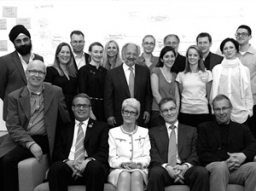The question of where to live is perhaps the most fundamental decision affecting the elderly and the infrastructure systems connected to these environments. The primary options of living at home, in service housing, or in an institution are each located within different urban, suburban, or rural contexts. Together, these factors determine an elderly person’s surroundings and their mobility options.
Live at Home
The option to remain at home is currently the one favoured encouraged by the Finnish government. As stated by the Ministry of Social Affairs and Health’s National Framework for High-Quality Services for Older People, the nationwide goal for 2012 is to have 91%-92% of persons over the age of seventy-five living at home. As of 2006, the reported figure nearly met the goal as a recorded 90.1% figure (Facts about Social and Health Care).
Living at home is defined as living outside of the welfare state’s physical care infrastructure (composed of institutions such as retirement homes and hospitals). Home living is characterized by independent living within one’s own apartment, with a family member or within an informal cooperative.
Persons unable or unwilling to live at home, even when a supporting network of home care and support services is available, will likely opt for a residence where care and services are more explicitly and tightly integrated into the design of the living environment. There are a number of different types of such facilities, whose entry is generally contingent upon the specifics of the potential resident’s physical and mental condition, or the functional capacity.
Residence within such a facility generally becomes more expensive, complex, and restrictive as the individual’s independence declines. As of 2005, 6.9% of the Finnish population over sixty-five was dependent on institutional care and services; this figure is the smallest among the Nordic countries, with Sweden at 7.0%, and Norway, with 11.7% (Facts about Social and Health Care).
Service Housing
An elderly person residing outside the home may chose between two primary types of care facilities: Service housing (or sheltered housing), is one type of residence in which a full suite of care and services are available (on demand); in some cases such care is provided on a 24-hour basis in those facilities that offer more intensive care. Service housing exists as individual, clusters, or entire blocks of such apartments.
As of 2007, approximately 29,300 people sixty-five and over lived in ordinary service housing, while 2.3% lived in 24-hour service housing (Statistical Yearbook). This percentage has steadily increased, having more than doubled from 2000 to 2007 (Statistical Yearbook. During the past decade, this 24-hour type of institutional care is the only one to have experienced an increase in Finland. It is also a relatively new form of care that yet to be officially defined.
Institutional Housing
An elderly person in need of the most complex or comprehensive integrated care may chose to live in an institutional environment. Such institutions offer part-time, short-term, or long-term care, and include nursing homes, general health centres, and specialized health facilities. An individual that typically enters such a facility due to specific medical and social conditions that demand a very particular forms of institutional care.
For example, most nursing homes and health centres have a significant long-term population that is suffering from dementia, which is very prevalent amongst the oldest of the ageing population (10.7% of those over seventy-five and 35% of those over eighty in Finland (Health in Finland)). As of 2005, 45% of the patients in nursing homes, and over 53% of the long-term patients in health centres, suffered from dementia (Statistical Yearbook). These residents live within special parts of the institutions that have been designed to accommodate the particular needs associated with dementia.
Source: HDL Challenge Briefing on Ageing 1.0

